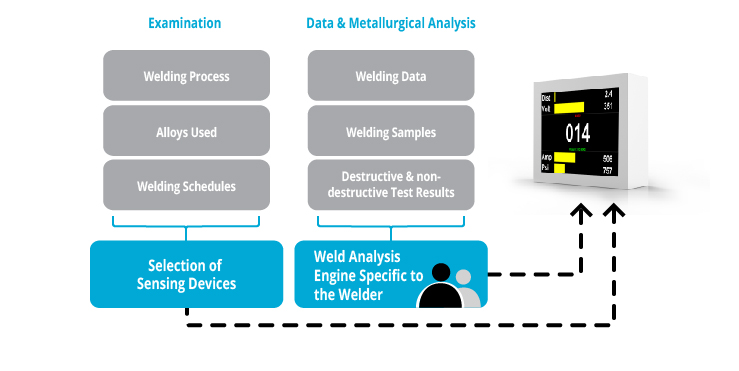WeldMS Custom
WeldMS Custom is ideal for manufacturers that require a weld analysis system specifically tailored for their welder and its welding process. Customizing a solution requires a more in depth understanding of the welder, the process, the weld schedules and the alloys used. A WeldMS professional will work closely with a manufacturer to fully understand these areas. This process results in the development of the analysis engine used by the WeldMS software. This provides an optimized and enhanced analysis that identifies good welds and rejects bad welds at a higher predictability rate than the Universal.

Retrofitting Process
The process involved in retrofitting the WeldMS Custom is described in the four-phase implementation below.
Phase 1 – Welder Retrofitting
The sensing devices are selected based on the welder’s welding process and the monitoring system is assembled based on the welder’s environment. The whole system is then retrofitted during a one-week site installation. At the end of the retrofit, the monitoring system is ready to collect welding data in phase two.
Phase 2 – Data & Sample Collection
During this phase large amounts of welding data is collected for each type of alloy and parameters used. Along with the welding data, destructive testing results are taken from each collected welding data and the physical weld samples. The importance of this phase is paramount because it forms the basis of our analysis. The more controlled and well documented the data, the higher the predictability rate in determining a pattern for a good or problematic weld.
Phase 3 – Data & Metallurgical Analysis
The data and samples collected from phase two go through an extensive analysis -- comparing digital information about welding parameters with the physical, mechanical and microstructural properties of both good and bad welds.
Phase 4 – Weld Analysis Engine
Based on the results of phase three, WeldMS designs the software-based analysis engine and integrates it into the monitoring system. This transforms the monitoring system into an effective welding quality analysis system -- optimized and tuned for the welder’s specific welding process as well as the materials in use and its weld schedules. In addition, within this phase our software development service is included to address any additional software features, or management and reporting requirements beyond what come with the standard components.
